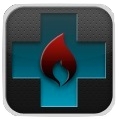What is the incidence of HELLP syndrome in developed nations?
a) 1 in 10 – 20 pregnancies
b) 1 in 100 – 200 pregnancies
c) 1 in 1000 – 2000 pregnancies
d) 1 in 10000 – 20000 pregnancies
b) 1 in 100 – 200 pregnancies
What is the mortality incidence of HELLP syndrome?
a) 0.01 – 0.02%
b) 0.1% – 0.2%
c) 1 – 2%
d) 10 – 20%
c) 1 – 2%
HELLP syndrome is typically a third trimester condition, which may occur up to 7 days after delivery – True or false?
True
List 6 complications of the HELLP syndrome
Complications of the HELLP syndrome
- Abruptio placentae
- Severe post partum haemorrhage
- Subcapsular liver haematoma
- Liver infarct
- Intracerebral or brainstem haemorrhage
- Cerebral infarct
- Visual impairment due to retinopathy
- Pulmonary oedema – higher risk in post partum onset of HELLP
- Acute kidney injury – higher risk in post partum onset of HELLP
- DIC
- Foetal demise in utero
List 5 differentials for HELLP syndrome
Differentials for HELLP syndrome
- Pre-ecclampsia / ecclampsia
- Acute fatty liver of pregnancy
- HUS
- TTP (rare in pregnancy)
- ITP
- Acute hepatitis
Corticosteroid therapy has demonstrated benefit for promoting foetal lung maturity for deliveries between 26 and 34 weeks of gestation. Are there any maternal benefits for corticosteroid therapy in HELLP syndrome?
It is uncertain as to whether there are any maternal benefits for corticosteroid therapy in HELLP syndrome. There is some weak evidence for shortened duration of thrombocytopaenia and a shorter duration of hospital stay. However, evidence for a mortality benefit or a reduction in the occurrence of complications is mixed to the point that steroids are not currently recommended as a standard therapy when managing HELLP.
While delivering the infant is recognised as the key intervention in managing HELLP syndrome, all efforts should be made to allow the infant to remain in utero until as close as possible to the expected date of delivery – True or false?
False
The critical gestation time here is about 34 weeks. After this time, foetal lung maturity is adequate to proceed with urgent delivery, at which time the mortality risk to the infant is about 8%.
Before 34 weeks of gestation, the mortality risk to the infant during HELLP syndrome is about 34%, so there is an argument for trying to delay delivering the infant until close to 34 weeks or at least until the mother has received 2 doses of either dexamethasone or betamethasone.
However, the longer delivery is delayed, the greater this risk of complications. Furthermore, if the mother’s condition is deteriorating, systolic BP is > 160mmHg, there is DIC or organ impairment such as worsening pulmonary oedema or kidney injury, then delivery should be expedited.
Vaginal delivery, including an induced delivery, is considered preferable to Caesarian section for HELLP syndrome – True or false?
True
Which of the following therapies are not used in the treatment of HELLP?
- Antithrombin
- Glutathione
- Exchange transfusion
- Labetolol
- Octreotide
- Antithrombin – has been trialled with some benefit demonstrated, but has not yet been subjected to any high quality trial
- Glutathione – has been trialled with some benefit demonstrated, but has not yet been subjected to any high quality trial
- Exchange transfusion – considered in situations of progressive elevation of bilirubin or falling Hb or PLTs and ongoing deterioration in maternal condition.
- Labetolol – or hydralizine or nifedipine, as hypertension is often associated
- Octreotide – No role in HELLP syndrome
- [/az_box_icon]
- The HELLP Syndrome: Clinical issues and management: A review. K. Haram, E. Svendsen, U. Abildgaard. BMC Women’s Health. Medscape Today: http://www.medscape.com/viewarticle/708514_2 (Full free article)
- Recommendations for the transfusion of plasma and platelets. Italian Society of Transfusion Medicine and Immunohaematology Working Party. Blood Transfusion 2009 April; 7(2): 132-150. http://www.ncbi.nih.gov/pmc/articles/PMC2689068/ (Full free article)
- Oh’s Intensive Care Manual, 6th Ed. Butterworth/Heinemann/Elsevier. Chapter 55, pg 669.
- ICU Topics CUHK: Obstetric: HELLP: http://www.aic.cuhk.edu.hk/web8/HELLP.htm
Pregnancy photo credit: Raul Garcia Piñero via photopin cc



























